Recipes You Can Make Using Sake [Key Japanese Cooking Ingredient]
We’ve talked about how important sake is for Japanese cuisine, so now you’re probably curious and want to try making a dish of your own.
Sake’s strong and distinctive taste can accentuate the flavor of any meal when paired with simple seasonings.
It’s perfect for chicken, pasta, seafood, and even pork. Below we’ll share a couple of recipes that are delicious with sake.
![Recipes You Can Make Using Sake [Key Japanese Cooking Ingredient]](https://www.bitemybun.com/wp-content/uploads/2022/11/Recipes-You-Can-Make-Using-Sake-Key-Japanese-Cooking-Ingredient--1200x675.png)
The most popular Japanese cuisine that uses cooking sake as its key ingredients is nabe (hot pot soup) and teriyaki.
People also love using sake to marinate chicken or seafood before frying or roasting them. Here are some recipes to try out.

Check out our new cookbook
Bitemybun's family recipes with complete meal planner and recipe guide.
Try it out for free with Kindle Unlimited:
Read for freeIn this post we'll cover:
- 1 Best 11 best recipes with sake
- 1.1 Sake-steamed clams
- 1.2 Sake-marinated beef ribs
- 1.3 Yosenabe Hot Pot
- 1.4 Miso Shrimp yakitori (Grilled Skewer)
- 1.5 Teba Shio (Salted Chicken Wings)
- 1.6 Classic teppanyaki beef steak with sake / soy sauce
- 1.7 Homemade Mentsuyu Sauce
- 1.8 Pork Belly Udon Soup Recipe
- 1.9 Warishita sukiyaki sauce
- 1.10 Nikiri sauce
- 1.11 Oyakodon recipe (Chicken & egg bowl)
- 2 11 Best Recipes to Make with Sake
- 3 How do you use sake?
- 4 What does sake taste like?
- 5 Conclusion
Best 11 best recipes with sake
Now let’s have a look at my favorite dishes that you can make using sake.
Sake-steamed clams
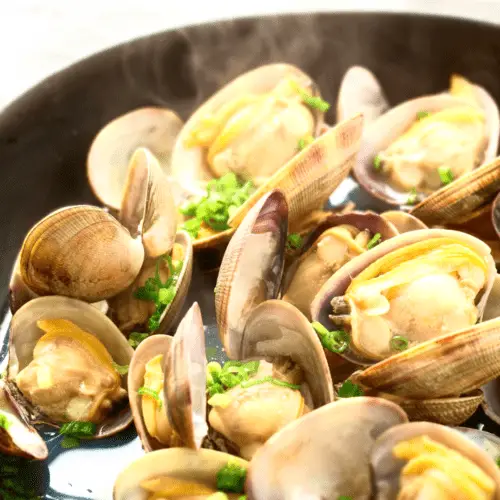
Sake-steamed clams with butter (Asari no Sakamushi (あさりの酒蒸し) are a Japanese favorite at izakayas (local pubs). To make them, you’ll need fresh clams and butter.
The clams are steamed in sake, a Japanese rice wine, along with a few aromatics.
The result is excellent since the ingredients are so straightforward and bring out the clams’ wonderful brininess.
Sake Steamed Clams are often served with a cold glass of frothy beer or sake at Japanese bars.
They are a good appetizer or even main course, depending on how many clams you get and what side dishes you serve them with.
Sake-marinated beef ribs

This recipe is the Japanese version of Korean bulgogi, or marinated beef ribs.
These short ribs are made with a Japanese sake marinade.
Ask your butcher to give you the ribs that are cut across the bone, and let them marinate overnight.
The sake gives the ribs a rich, savory flavor that pairs perfectly with beef. When roasted in the oven, the ribs become juicy and tender and absorb the flavors of the spices like turmeric.
We recommend serving the beef ribs cut across the bone since they are more manageable pieces that way. Serve alongside rice and coleslaw for an authentic BBQ experience.
Yosenabe Hot Pot
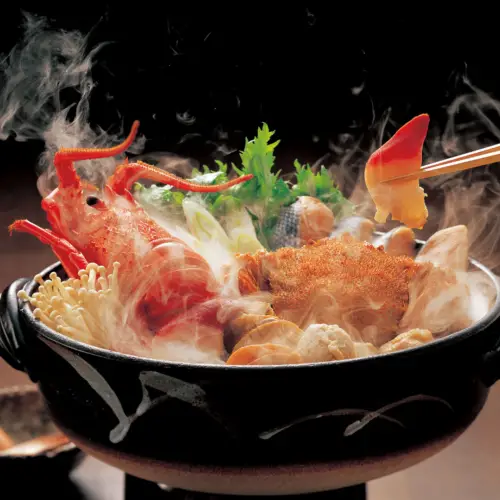
Yosenabe is a Japanese hot pot. It’s made by combining meat and vegetables in a savory dashi broth.
Japanese cuisine has a large variety of Nabe, but this version includes sake as part of the broth.
Yosenabe is the easiest one to create, and it’s also known as “anything goes” hot pot because you can just use whatever ingredients you have on hand.
You begin with a straightforward dashi broth, then add your preferred proteins, fresh vegetables, and mushrooms.
The combination of components will give the soup broth lots of flavor!
Hot pot soup (nabe) is the best comfort food in cold weather to enjoy in a group, either with friends or family.
Miso Shrimp yakitori (Grilled Skewer)
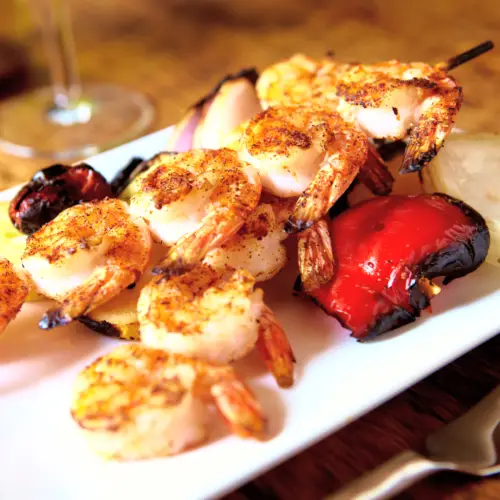
Traditional yakitori requires a special grilling device called a konro or yakiniku grill. But you can still use a regular grill for cooking the dish.
Instead of shrimp, you can also use chicken or beef for this dish. However, shrimp yakitori is perfect for a quick weeknight dinner or as an appetizer before your main meal.
The shrimp yakitori recipe comes alive with the flavors of sake, miso paste, and mirin. This makes a delicious marinade that adds extra richness to the shrimp.
Teba Shio (Salted Chicken Wings)

Chicken wings are easily lovable by a lot of people.
By marinating it with sake, you will elevate the savory taste of the flavor with an ultimate umami kick. The cooking sake also tenderizes the meat and gives it a nice color.
Teba Shio is the perfect dish to enjoy during a casual party or get-together with friends. It’s easy and quick to make, but it will surely impress even picky eaters.
In this Japanese recipe, the chicken wings are salty and full of flavor. The wings are oven-broiled until they become crispy on the outside but tender on the inside.
To make it taste even more perfect, you can add some spices to the dish, like Japanese seven-spice.
Classic teppanyaki beef steak with sake / soy sauce
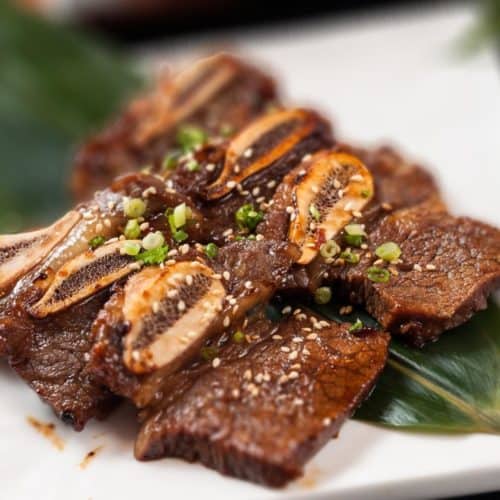
This dish is a Japanese teppanyaki hot plate favorite. It’s made by grilling beef strips on a teppanyaki hot plate.
Then the beef is covered in a mixture of sake, soy sauce, garlic, and some other condiments.
The steak is juicy, tender, and full of umami flavor from the sake and soy sauce.
It’s served with steamed rice, mushrooms, onions, and carrots for a complete meal that is packed with flavor.
Rump steak or sirloin are good choices for this recipe, but if you can afford to splurge, make this dish with Japanese wagyu beef for out-of-this-world flavor!
Homemade Mentsuyu Sauce
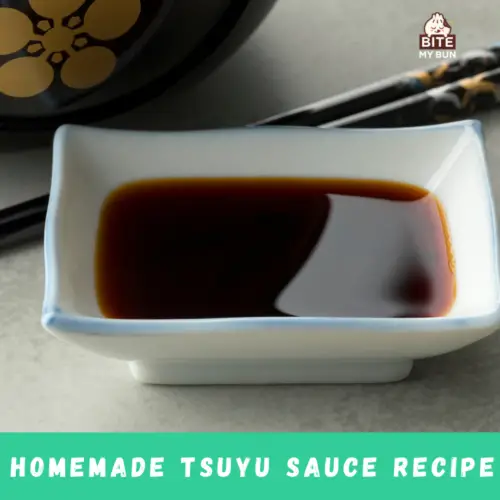
Mentsuyu is a popular soup base used in Japanese recipes. It’s a savory, umami-rich sauce that gives dishes an added depth of flavor.
In this recipe, we show you how to make mentsuyu sauce at home. It only requires a few simple ingredients like sake, soy sauce, mirin, bonito flakes, and some seaweed (kombu).
To use your homemade mentsuyu sauce, simply add it to soups and stews, or pour over rice or noodles.
You can even use it as a marinade for chicken, fish, or beef before cooking.
Our favorite way to use mentsuyu is to add it as the base seasoning for ramen soup. Trust us, it’s much better than using those seasoning packets!
Pork Belly Udon Soup Recipe
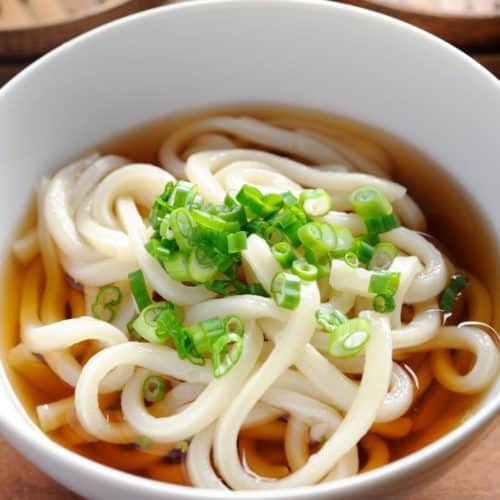
This recipe is for a hearty pork belly udon soup that will keep you warm and satisfied on cold winter days.
It incorporates the flavors of sake, soy sauce, and dashi broth to perfectly season the tender pork belly.
The pork belly is double-boiled until it becomes very soft and tender. Then it’s combined with udon noodles and vegetables to create a filling, comforting soup.
This pork belly udon soup is the perfect meal for when you’re craving something warm, and since it’s topped with boiled egg, it’s a filling and satisfying dish.
Luckily, it’s not considered impolite if you slurp up the noodles, so go ahead and savor it!
Warishita sukiyaki sauce
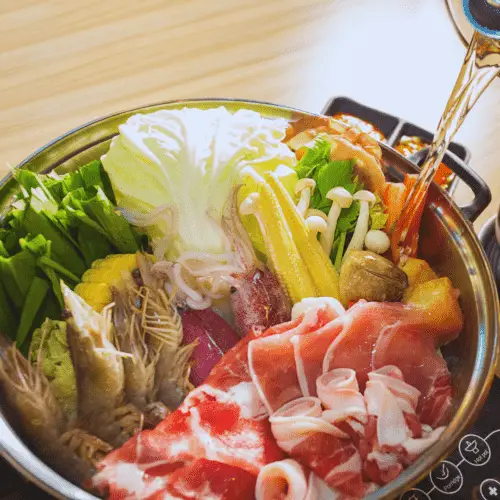
What makes warishita sukiyaki sauce special is the combination of Japan’s two favorite cooking alcohols: sake and mirin.
This combination gives the sauce a unique, slightly sweet flavor that is perfect for making the beef sukiyaki hot pot.
To make warishita sukiyaki, you first need to make a traditional dashi broth by boiling kombu (seaweed) with bonito flakes.
Once the broth is ready, you can mix in the sake and mirin with some soy sauce and a little sugar.
Then you boil meat and vegetables in the sukiyaki sauce until they are tender. This recipe is perfect for a chilly winter night, and it’s so easy to serve.
Traditionally, sukiyaki is served in a special shallow pan on a table, so everyone can cook their own food.
Nikiri sauce

The Japanese sure love their sauces and glazes. One of these is the classic sauce used to glaze fish and it’s called Nikiri.
Before fish is served, a thin glaze called nikiri is frequently applied to it.
You won’t need to add soy sauce or any other seasoning once it has been served because there will be sufficient nikiri.
Nikiri is a versatile sauce that can be used with almost any type of fish. It’s simple to make and only requires ingredients like sake, dashi, mirin, and soy sauce.
If you have any leftover nikiri sauce, use it as a seasoning for rice or vegetables.
You can even use it as a dipping sauce for sushi and sashimi. With its rich, umami flavor and savory taste, it’s perfect for adding extra depth to any dish.
Oyakodon recipe (Chicken & egg bowl)

Oyakodon is a popular Japanese comfort food that combines the flavors of chicken and eggs in a rich, flavorful sauce and is served on rice.
You’ve never had anything like the flavorful broth made with meat that is served with fluffy eggs over steamed rice.
The rice melts in your mouth after absorbing the flavorful liquid.
Oyakodon is served in a typical Japanese donburi bowl, which has a lid to hold in the steam and juices.
This helps create a rich, umami flavor that is perfect for savoring for lunch or dinner when you’re busy or on the go.
To make oyakodon, chicken is cooked in a soy, sake, and dashi stock and then combined with vegetables.
This mixture is then poured on a bed of rice, and trust us, it’s super delicious!

11 Best Recipes to Make with Sake
Ingredients
- 2 tbsp sake
- 2 cloves garlic
- 1 tbsp sugar
- 2 tbsp soy sauce
- 2 tbsp water
- 4 lbs prime beef rump to be cut into a 1-inch thick steak
- 2 tbsp oil
- Salt and white pepper to taste
Instructions
- Slice garlic thinly and set aside.
- Mix sake, sugar, soy sauce, and water in a bowl to make the sauce. Set aside.
- Sprinkle salt and pepper on the steaks.
- Heat the teppanyaki on medium-high heat and add oil. Add sliced garlic and cook until browned. Move the garlic to the cool side if you have the room or remove it from the teppanyaki.
- Add steaks to the teppanyaki and cook for about 2 minutes per side or however you like.
- Add the sauce to a small pan and reduce it for a minute.
- Place the meat on a dish. Pour the reduced sauce over it, then top with the garlic for garnish.
Notes
How do you use sake?
Sake is one of those multi-purpose ingredients – it can be used for drinking or cooking.
But note that drinking sake is different from cooking sake; you should use the latter in your recipes, as it will give a distinct, intense flavor to your food.
Whether you want to cook up a delicious stir-fry or slow-roast some meat on the grill, there are plenty of ways to incorporate sake into your cooking.
For example, you could marinate chicken in sake and soy sauce before frying it, or use sake as the base for a savory teriyaki sauce.
Sake is also used for soup bases and to deglaze pans when searing meat. It’s a versatile ingredient that can add an intriguing layer of flavor to any dish.
It can also be an important part of a sauce or marinade, as it helps to tenderize fatty meats and bring out their rich flavors.
So if you’re a fan of cooking with sake, don’t be afraid to experiment and try new dishes!
Whether you’re looking for something simple or more complex, there are countless ways to use sake in your recipes!
What does sake taste like?
Sake has a slightly sweet, slightly fruity flavor with hints of vanilla and nutmeg. It can also be described as lightly floral and herbal, with notes of honey and melon.
Depending on the type or grade of sake, it can also be bolder and richer in flavor.
No matter what type or grade of sake you try, though, its complex flavors and aromas will always be sure to impress.
No matter what type or grade of sake you try, though, its complex flavors and aromas will always be sure to impress.
But if you’re using cooking sake like in all of the recipes above, just note the flavor is milder and not as complex as traditional sake.
It will still add a delicious, unique flavor to your recipes that you’ll love.
Conclusion
As you can see, sake adds rich and complex flavors to any dish.
Whether you’re cooking a main course or an appetizer, this Japanese rice wine will help infuse your food with delicious umami flavors.
Good cooking sake is also a versatile ingredient that can be used for marinating and other cooking purposes.
So why not try out some delicious sake-infused dishes today?
Find out what are the best sakes to cook with here (full review + buying guide)
Check out our new cookbook
Bitemybun's family recipes with complete meal planner and recipe guide.
Try it out for free with Kindle Unlimited:
Read for freeJoost Nusselder, the founder of Bite My Bun is a content marketer, dad and loves trying out new food with Japanese food at the heart of his passion, and together with his team he's been creating in-depth blog articles since 2016 to help loyal readers with recipes and cooking tips.
